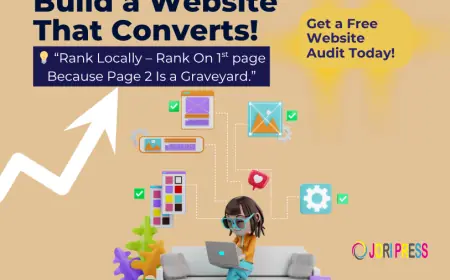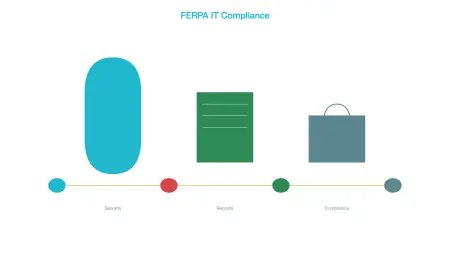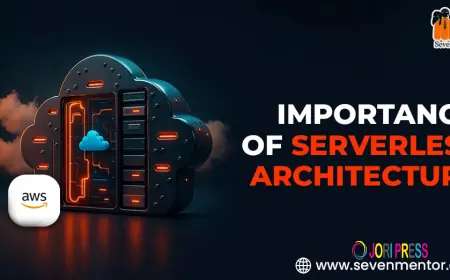What Is Email Marketing and How It Helps Businesses Grow?
Businesses today rely heavily on digital strategies to connect with customers, drive sales, and build trust. Among the most cost-effective methods, Email Marketing stands out for its ability to reach targeted audiences, personalize messages, and deliver measurable results that boost long-term brand growth.
In the fast-changing digital world, businesses are constantly looking for ways to connect with their customers in meaningful and measurable ways. Among the many available strategies, one method continues to remain relevant and powerful despite evolving technologies. Email Marketing allows companies to nurture relationships, generate sales, and maintain consistent communication. This approach provides measurable results, is cost-effective, and works across industries, making it an indispensable tool for brands of all sizes.
Why Businesses Need Strong Digital Communication
A business cannot grow without a reliable communication strategy. Consumers today demand personalized interactions and expect companies to reach out on the platforms they already use daily. While social media channels and search engines are valuable, they lack the consistency of direct outreach. This is why digital communication systems that go straight into a customer’s inbox have retained their importance. Customers check their inboxes multiple times a day, giving businesses the perfect opportunity to deliver relevant updates, promotions, and personalized offers.
The Power of Customer Reach
Reaching a customer at the right time can significantly influence purchase decisions. Unlike ads that depend on algorithms or platforms with limited organic reach, direct inbox communication guarantees higher visibility. The relationship created here feels personal, because the customer has chosen to subscribe. This increases trust and positions the business as a valued partner in the customer’s buying journey.
Building Trust With Personalization
Modern consumers appreciate brands that know their preferences. Tailored messages make customers feel valued, which strengthens loyalty and increases repeat purchases. Businesses that fail to personalize run the risk of losing customers to competitors that pay attention to individual needs. By segmenting audiences and offering relevant content, brands can deliver meaningful messages that enhance trust.
Evolution of Direct Digital Communication
Digital communication with customers has evolved significantly over the years. In the early days, companies sent out mass updates without much focus on personalization. Email Marketing Advertising today enables businesses to leverage advanced tools to design targeted campaigns that respond to consumer behaviors. From automated workflows to detailed analytics, communication has shifted from a broad approach to highly tailored strategies.
From Print to Digital
Before the internet, businesses relied heavily on print mail. While effective to some extent, it lacked speed, scalability, and accurate measurement. With digital systems, brands can now reach thousands of customers instantly while tracking engagement. This shift not only reduced costs but also gave rise to a measurable form of marketing.
The Role of Automation
Automation has transformed communication into a more efficient process. Companies can now set up workflows that send relevant updates automatically based on customer actions. For example, when a new subscriber joins, they can instantly receive a welcome sequence designed to build engagement. Automation also ensures consistency, which strengthens brand identity.
Benefits of Direct Inbox Communication
Businesses that invest in customer inbox strategies enjoy a wide range of benefits. It allows them to build strong relationships, reduce costs, and generate higher returns compared to many other marketing channels.
Cost-Effective and Scalable
One of the biggest advantages is affordability. Compared to paid ads or physical mail, digital inbox campaigns cost significantly less while reaching more people. This makes it especially useful for small businesses with limited budgets. Scalability is another factor; a single campaign can reach ten people or ten thousand without additional expenses.
Higher Return on Investment
Companies continue to choose this strategy because of its strong return on investment. Research consistently shows that for every dollar spent, the returns can be many times higher. Email Marketing Strategies make this possible through a combination of personalization, targeting, and low distribution costs. As a result, businesses often prioritize this channel in their marketing mix.
Essential Elements of Effective Campaigns
Running a successful campaign requires more than just sending a message. Businesses must focus on design, timing, and audience targeting to achieve the best results.
-
A compelling subject line to capture attention
-
A clear and engaging message that delivers value
-
A strong call-to-action that guides customers
-
Personalization based on customer behavior
These elements create an experience that feels less like a generic promotion and more like a helpful communication.
Crafting Strong Subject Lines
The subject line is often the first impression a customer has of a campaign. A well-written subject line should spark curiosity, highlight benefits, or provide urgency. Businesses that fail to optimize this part risk losing potential engagement before the message is even opened.
Importance of Timing
Sending messages at the right time can dramatically affect results. Customers are more likely to engage during certain hours or days, depending on industry and location. Analytics tools can help businesses identify peak engagement times to maximize visibility.
Tools and Platforms for Businesses
The success of campaigns also depends on the tools used to manage them. Today, there are numerous platforms designed to streamline everything from subscriber management to performance tracking.
Popular Tools Available
Many businesses rely on platforms such as Mailchimp, Constant Contact, and HubSpot to manage campaigns. These platforms offer automation, analytics, and templates that simplify the process. IT Leadz demonstrates how using such tools allows businesses to save time while ensuring professional quality in their outreach.
Tracking Performance Metrics
Performance measurement is critical for long-term success. Key metrics include open rates, click-through rates, conversion rates, and unsubscribe rates. Monitoring these numbers helps businesses refine their strategies and improve outcomes with each campaign.
Strategies for Growing a Subscriber List
Without a strong list of subscribers, campaigns cannot succeed. Building this list requires strategy, creativity, and consistent effort. Businesses should focus on providing value in exchange for customer information.
Lead Magnets and Freebies
Offering valuable resources such as eBooks, guides, or discount codes is a proven way to attract subscribers. Customers are more willing to share their information when they receive something beneficial in return.
Website Sign-Up Forms
Optimized sign-up forms on websites can also boost subscriber numbers. These forms should be easy to fill, visible in key areas, and emphasize the value customers will receive after joining the list.
Common Mistakes to Avoid
Even the best campaigns can fail if businesses overlook certain mistakes. By avoiding these errors, companies can save time and improve their chances of success.
-
Sending too many messages too frequently
-
Ignoring personalization and segmentation
-
Using misleading subject lines that break trust
-
Failing to optimize for mobile devices
Correcting these issues ensures smoother campaigns and stronger customer relationships.
Neglecting Mobile Optimization
With most users checking inboxes on mobile devices, campaigns must be mobile-friendly. Poorly formatted messages reduce readability and engagement, leading to unsubscribes.
Overlooking Compliance Rules
Businesses must also comply with legal requirements like GDPR and CAN-SPAM. Failing to follow these guidelines can lead to penalties and damage brand reputation.
Advanced Techniques for Higher Engagement
Once the basics are mastered, companies can apply advanced strategies to take their campaigns further. Search Engine Marketing techniques such as personalization through artificial intelligence, predictive analytics, and dynamic content help enhance overall effectiveness.
AI-Driven Personalization
Artificial intelligence can analyze customer behaviors and predict preferences. With this, businesses can send hyper-personalized messages that increase engagement and conversions.
Dynamic Content Delivery
Dynamic content adapts to the recipient in real-time, ensuring they see the most relevant version of the message. This creates a more engaging experience compared to static, one-size-fits-all content.
Future of Inbox Communication in Marketing
The future of direct digital communication looks promising. As technology evolves, businesses will continue to rely on this strategy to reach customers effectively. Integration with other digital tools will make campaigns even more powerful, combining personalization with automation and analytics.
Integration With Other Channels
Campaigns will increasingly be integrated with social media, chatbots, and mobile apps. This creates a seamless experience for customers, allowing brands to remain consistent across multiple touchpoints.
Rising Importance of Privacy
Privacy will play an even bigger role in shaping strategies. Consumers are becoming more conscious of how their data is used. Email Marketing Sites that prioritize transparency and respect privacy will earn greater trust and loyalty.
Conclusion
In today’s competitive market, businesses need tools that deliver consistent engagement, measurable results, and strong returns. While many trends come and go, this channel remains reliable and effective for connecting with customers. By investing in thoughtful strategies, avoiding common mistakes, and using modern tools, companies can maximize results. With innovation and personalization, the future promises even greater opportunities for growth through Email Marketing.
Frequently Asked Questions (FAQs)
What Is The Best Time To Send Campaigns?
The timing depends on your audience behavior. Generally, weekdays during working hours show higher engagement, but testing different times helps you find the best results.
How Can You Improve Open Rates?
Personalized subject lines, clear messaging, and segmenting your audience increase the chances of higher open rates. Testing different subject line formats also helps.
Why Is Personalization Important In Campaigns?
It makes subscribers feel valued, improves relevance, and boosts engagement. Personalized content leads to stronger connections and better response rates.
Where Should You Place Call-To-Action Buttons?
Placing them above the fold and repeating them within the content ensures visibility. Clear and bold CTAs drive higher click-through rates.
Which Metrics Should You Track Regularly?
Open rates, click-through rates, bounce rates, and conversion rates are key metrics to monitor performance and refine future strategies.
What's Your Reaction?
 Like
0
Like
0
 Dislike
0
Dislike
0
 Love
0
Love
0
 Funny
0
Funny
0
 Angry
0
Angry
0
 Sad
0
Sad
0
 Wow
0
Wow
0





















































